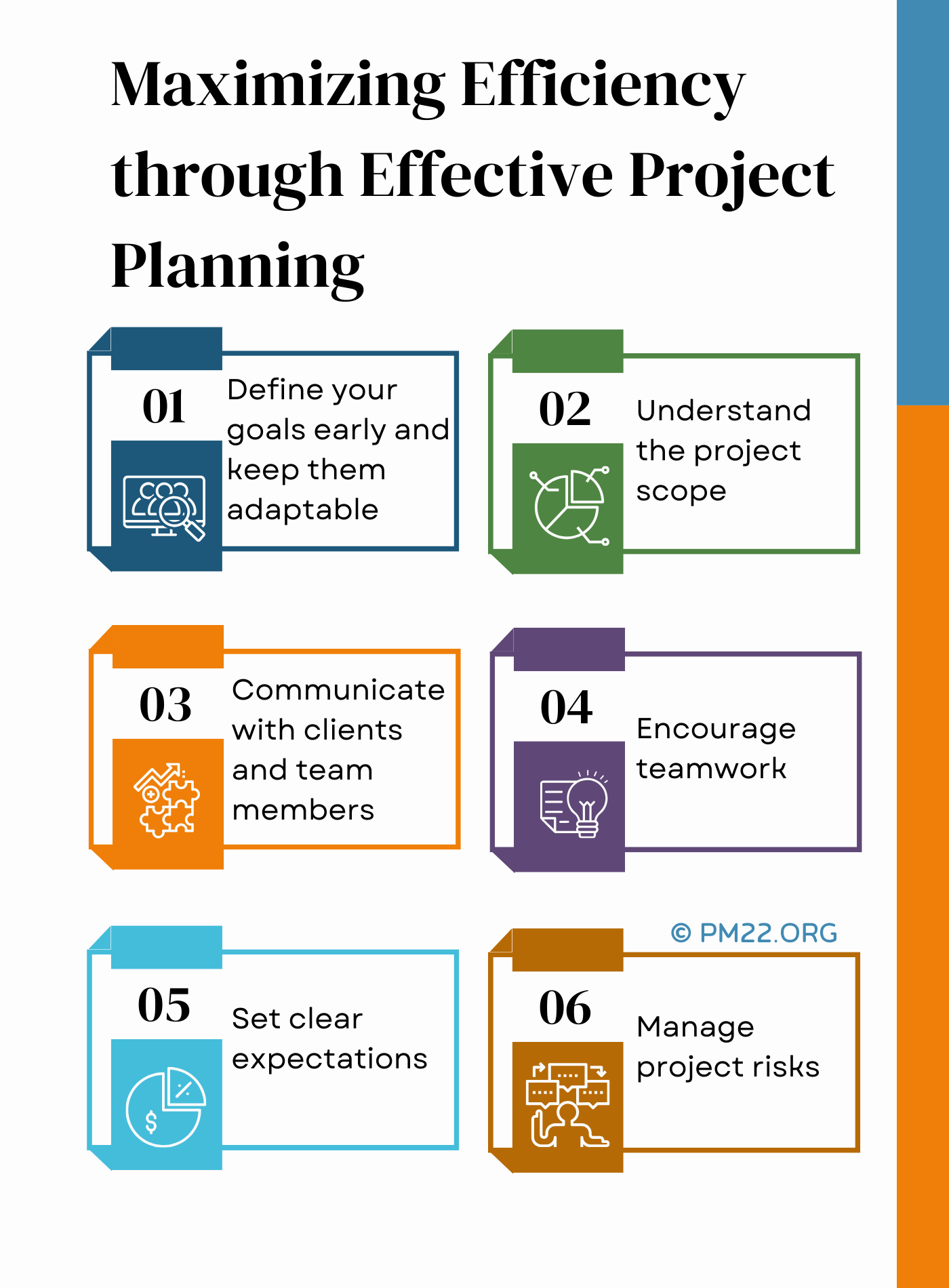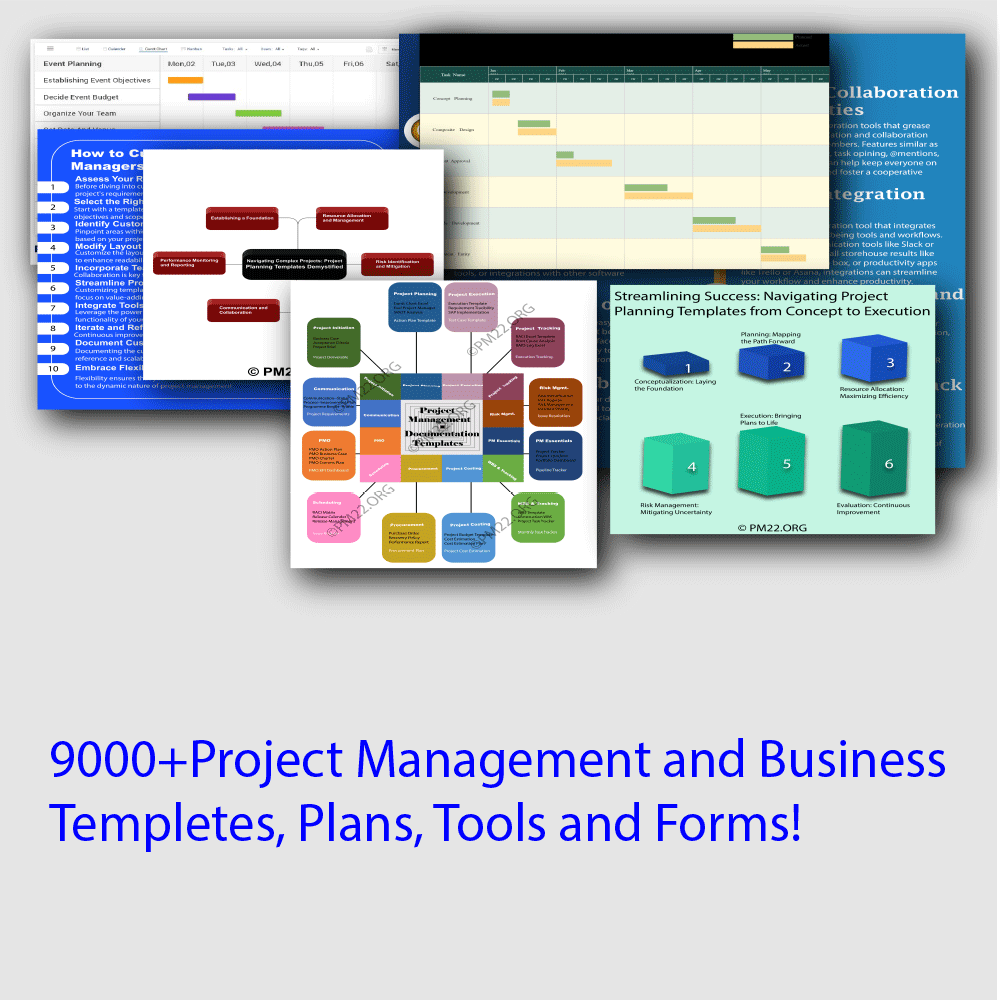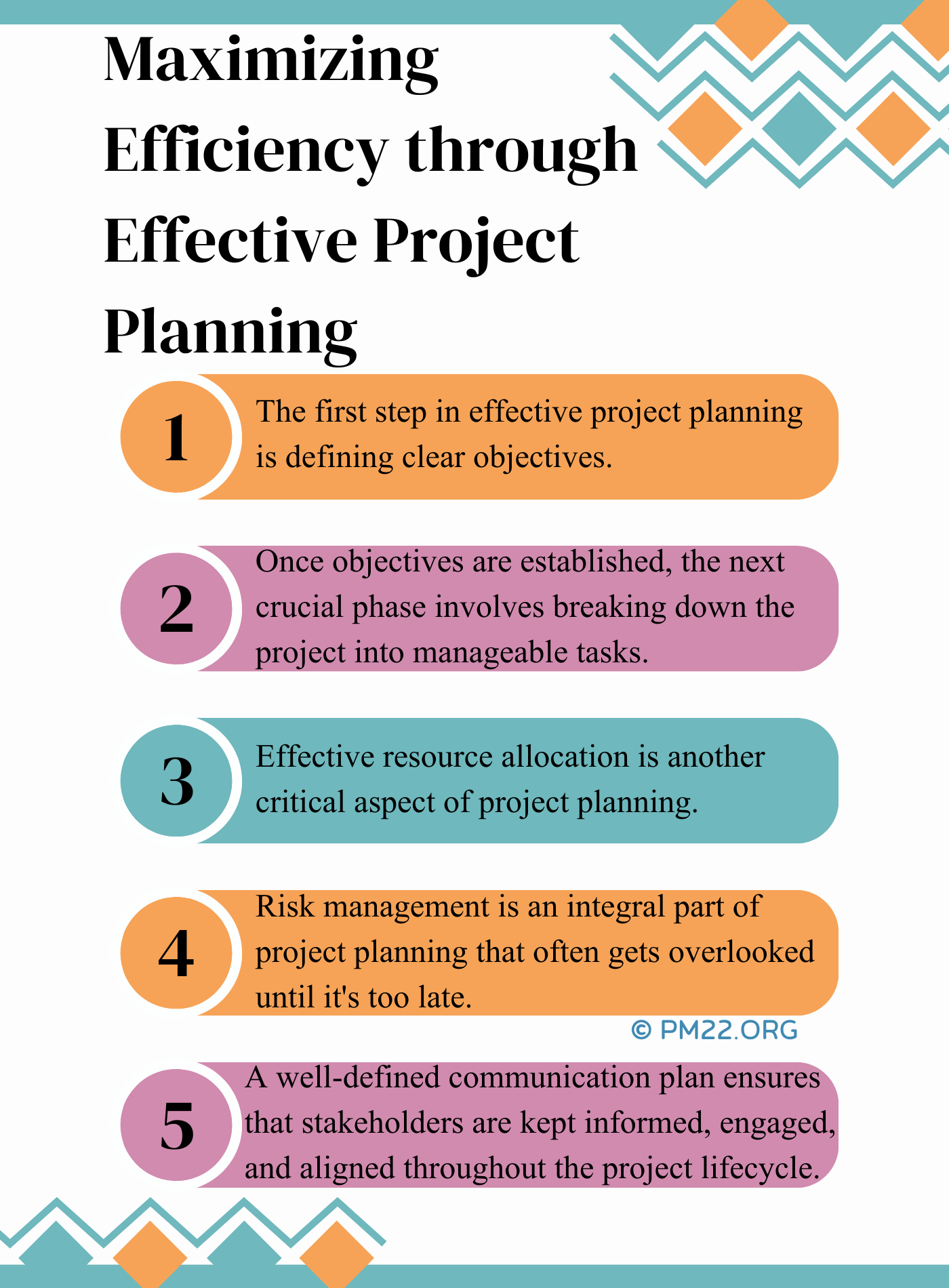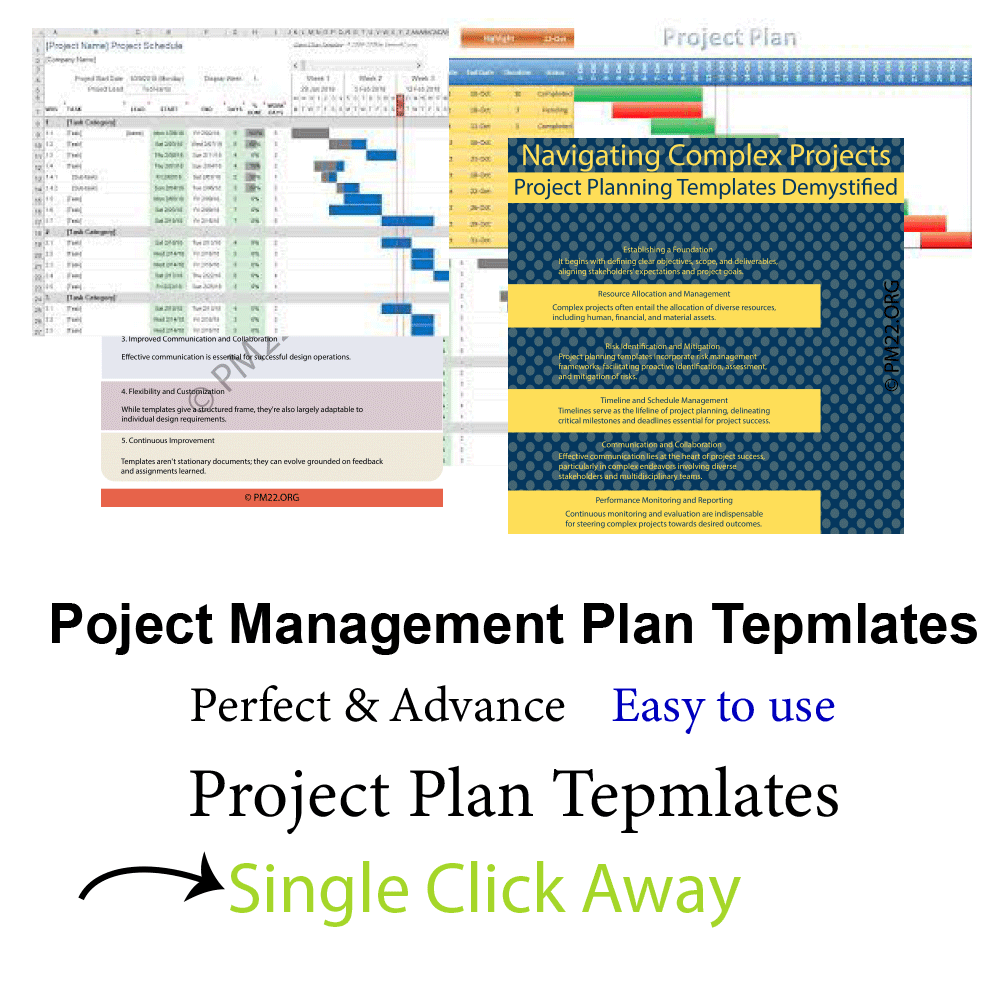 In the realm of project management, success isn’t merely measured by the completion of tasks but by the efficiency with which they are executed. Effective project planning serves as the cornerstone for achieving this efficiency, laying down a blueprint that guides every step of the journey from inception to completion. Whether it’s constructing a skyscraper, launching a marketing campaign, or organizing a charity event, meticulous planning is the bedrock upon which successful projects are built.
In the realm of project management, success isn’t merely measured by the completion of tasks but by the efficiency with which they are executed. Effective project planning serves as the cornerstone for achieving this efficiency, laying down a blueprint that guides every step of the journey from inception to completion. Whether it’s constructing a skyscraper, launching a marketing campaign, or organizing a charity event, meticulous planning is the bedrock upon which successful projects are built.
The first step in effective project planning is defining clear objectives. A project without a clear goal is akin to setting sail without a destination. Stakeholders must have a unified understanding of what needs to be achieved, why it’s important, and how success will be measured. This clarity ensures that efforts are aligned, and resources are directed purposefully toward the desired outcomes.
CLICK HERE TO DOWNLOAD 300+ PROJECT MANAGEMENT TEMPLATES & DOCUMENTS IN EXCEL
Once objectives are established, the next crucial phase involves breaking down the project into manageable tasks. This decomposition process, often referred to as work breakdown structure (WBS), entails dividing the project into smaller, more actionable components. Each task should be well-defined, with clear deliverables, deadlines, and assigned responsibilities. By breaking down the project into bite-sized chunks, teams can better organize their efforts, identify dependencies, and allocate resources efficiently.
With tasks delineated, the next step is sequencing them logically to create a roadmap for execution. This entails identifying the order in which tasks should be performed based on dependencies, constraints, and resource availability. A well-sequenced plan minimizes bottlenecks, optimizes resource utilization, and ensures a smooth flow of work throughout the project lifecycle.
Effective resource allocation is another critical aspect of project planning. Resources, whether they are human, financial, or material, are finite and must be utilized judiciously to maximize efficiency. By accurately estimating resource requirements for each task and allocating them accordingly, project managers can prevent over allocation or underutilization, thus optimizing productivity and minimizing wastage.
Risk management is an integral part of project planning that often gets overlooked until it’s too late. Identifying potential risks, assessing their impact and likelihood, and developing mitigation strategies upfront can save valuable time and resources down the line. By proactively addressing risks, teams can minimize disruptions, stay on course, and maintain project momentum even in the face of adversity.
Communication lies at the heart of effective project planning. A well-defined communication plan ensures that stakeholders are kept informed, engaged, and aligned throughout the project lifecycle. Regular progress updates, milestone reviews, and transparent channels for feedback facilitate collaboration, foster trust, and mitigate misunderstandings or conflicts that can derail progress.
CLICK HERE TO DOWNLOAD 300+ PROJECT MANAGEMENT TEMPLATES & DOCUMENTS IN EXCEL
Flexibility is the hallmark of successful project planning. While meticulous planning is essential, it’s equally important to embrace adaptability in the face of changing circumstances. Projects rarely unfold exactly as planned, and the ability to pivot, improvise, and adjust course when necessary is key to staying agile and resilient in a dynamic environment.
Lastly, continuous evaluation and improvement are essential for refining project planning processes and driving ongoing efficiency gains. Post-mortem analyses, lessons learned sessions, and feedback loops provide valuable insights that can inform future projects and foster a culture of continuous improvement within the organization.
In conclusion, effective project planning is not just about creating a roadmap; it’s about charting a course toward success. By defining clear objectives, breaking down tasks, sequencing activities, allocating resources, managing risks, fostering communication, embracing flexibility, and striving for continuous improvement, project managers can maximize efficiency and drive successful outcomes even in the most challenging of endeavors. In the grand tapestry of project management, effective planning is the thread that binds vision to reality, turning aspirations into achievements.
